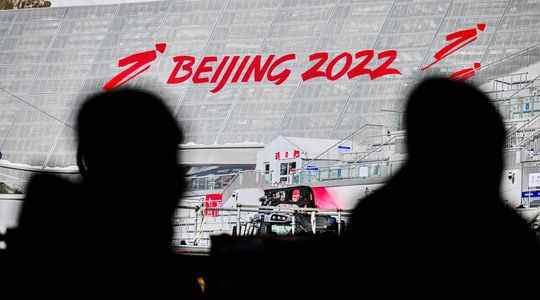Beijing wants to green its image, and what better way than to display its ambition during the Beijing Winter Olympics which begin on February 4? “Beijing 2022 will be the greenest and cleanest Olympics ever,” boasts the People’s Daily Online, official propaganda organ of the Central Committee of the Communist Party of China, in a article published on friday. “This is the first time in the history of the Olympic Games that all sites are powered 100% by green energy, the ice-making technology adopted producing zero emissions”, argues the media again.
Zhangjiakou, the city that co-organizes the Games about 180 km northwest of Beijing, has indeed installed wind turbines capable of producing 14 million kilowatts, approximately the same power as a small state like Singapore. In addition, the surrounding mountains are covered with solar panels with an additional capacity of 7 million kilowatts. These different facilities are connected to a distribution center to which the Olympic sites will be connected – allowing Beijing to say that the supply of the Games is only of renewable origin.
This promise is also a propaganda argument for the Chinese regime, while several Western countries, led by the United States, have decided to snub the Olympics to denounce human rights violations in China, in particular against the Uyghur Muslim minority. But are these “green” Olympics really that ecological? Several elements tend to undermine this advertising.
Built in a nature reserve
The location of the Olympics, as pointed out CNN, is in itself already problematic. According to the American news channel, the site of the ski resort is located in a national nature reserve, that of Songshan, a park founded in 1985 to protect its dense forests, its alpine meadows and its rich biodiversity. CNN explains that the boundaries of the reserve were redrawn to accommodate the ski area when China won the bid to host the sporting event.
Thus, the original core area of the nature reserve – including the highest peak, which experts say has the greatest importance for biodiversity – is no longer part of the protected lands. “It’s really a shame, because (the original core area) is one of the few places north of Beijing that has alpine grasslands,” said a Chinese environmental expert, who asked not to be named. fear of repercussions. “Such a unique ecosystem is why it was included in the original nature reserve in the first place.”
artificial snow
The ski slope is also a problem because it lacks… snow. In 2019, China estimated that it would need 185 million liters of water to cover the naturally non-existent tracks. So if the organizers claim that this water does not contain chemicals, a report produced by researchers from the Sport Ecology Group of the English University of Loughborough and the association Protect Our Winters, proves the contrary. According to the report, more than 100 snow generators and 300 snow cannons will work tirelessly to cover the slopes with fake snow.
This process is energy and water-intensive and requires the use of chemicals to slow the melting of the snow, the authors point out. It also makes surfaces unpredictable and potentially dangerous, according to many competitors. “The 2022 Winter Games will undoubtedly be an impressive spectacle, which millions of people around the world will watch and enjoy, he notes. But they should also spark debate on the future of the Winter Games. and the limits of making artificial natural environments”.
Air quality
To ensure breathable air, coal stoves have been replaced by electric or gas heating systems in 25 million homes in Beijing and surrounding areas, which are bitterly cold during the winter months. Steel mills in the region were ordered to halve production last August and tens of thousands of factories had to pay fines for exceeding emission limits.
Air quality has undeniably improved in Beijing in recent years: the Chinese capital recorded only 10 days of high air pollution in 2020, compared to 43 in 2015, according to the Ministry of the Environment. The presence of fine particles from the rest of the country, however, continues to regularly exceed the recommendations of the World Health Organization (WHO).
“The lesson of the 2008 (Summer) Olympics in China is that moving polluting industries out of Beijing is not enough to guarantee a lasting improvement in air quality,” commented the environmental organization. Greenpeace in 2015.
And in the long term
When Beijing was named host city of the 2022 Olympics, one of the arguments of the Chinese candidacy was that the events would encourage 300 million Chinese to take up winter sports. But this activity risks putting even more pressure on water resources. Beijing can already count on only 300 m3 of water per year and per inhabitant, less than a third of the supply recommended by UN standards.
“Organizing the Olympics in this region is an aberration, it’s irresponsible, denounces geographer Carmen de Jong, from the University of Strasbourg, interviewed by AFP. As the idea is to create ski resorts , you’re going to have to pump water to make snow. They can’t work naturally.”
The impact of transport
On the other hand, unlike previous Games, the impact of transport should be less. The mountains being distant from the capital, Beijing has built a high-speed train line to reach the ski slopes and other Olympic sites, and has set up hundreds of coaches to transport the athletes and the accompanying personnel.
According to the organizers, 85% of the vehicles used for the 2022 Olympics will run on electricity or hydrogen. Due to the epidemic, only spectators residing in China will be able to attend the Games – which should mechanically reduce the ecological cost of air transport.
